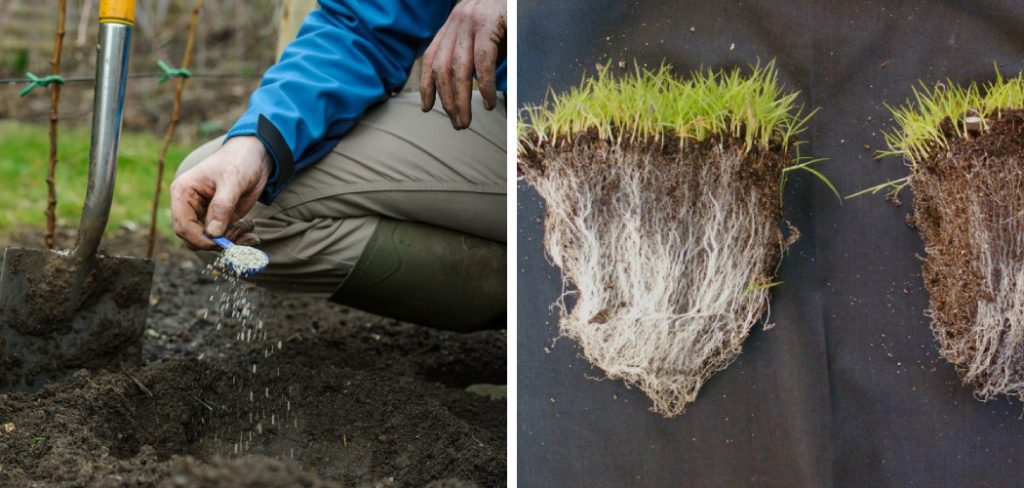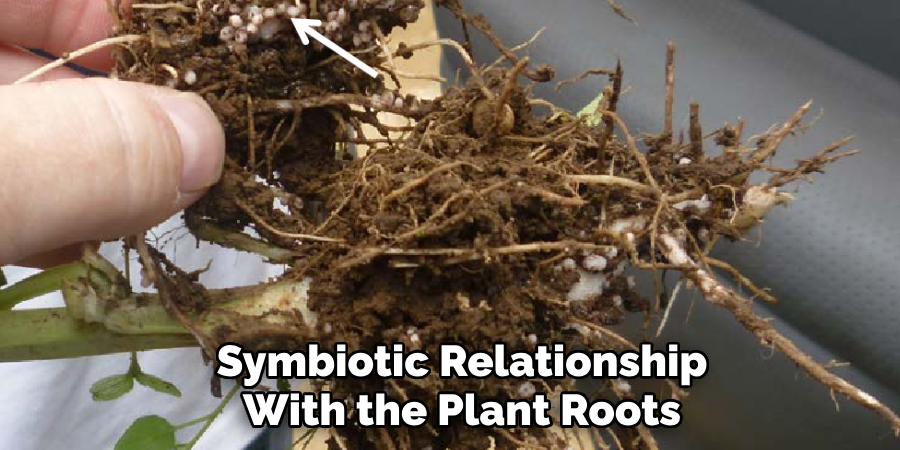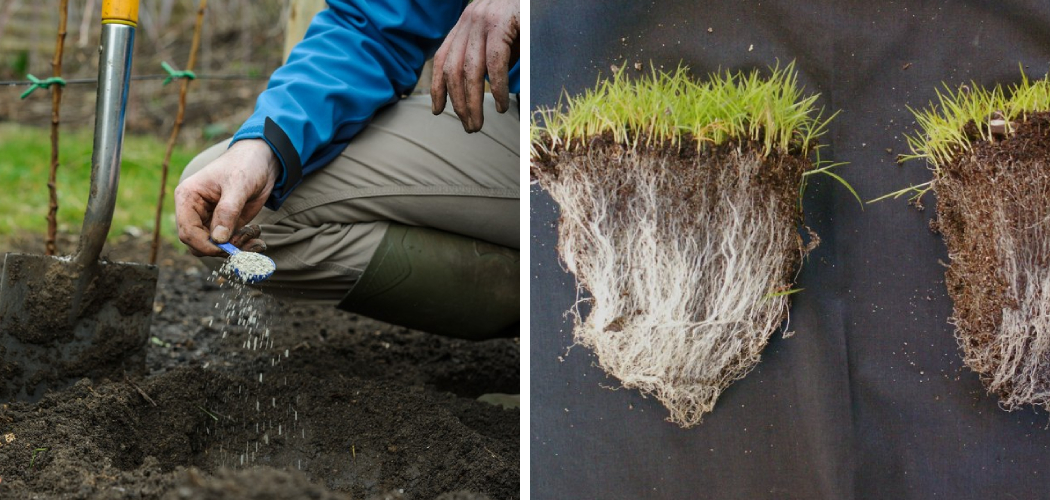To add mycorrhizae to your lawn, simply mix the recommended amount of mycorrhizal fungi into water and apply evenly to the soil. Mycorrhizae help improve nutrient absorption and overall plant health.
Having a lush and healthy lawn is the dream of every homeowner. However, achieving that perfect green carpet can sometimes be a challenge. This is where mycorrhizae comes into play. These beneficial fungi form a symbiotic relationship with plant roots, enhancing nutrient absorption and overall plant health.
Adding mycorrhizae to your lawn can significantly improve its resilience, helping it withstand drought, disease, and harsh environmental conditions. We will explore the simple yet effective process of adding mycorrhizae to your lawn and discuss the numerous benefits it brings. So, let’s dive right in and discover how you can give your lawn the boost it needs with mycorrhizae.

The Benefits Of Adding Mycorrhizae To Your Lawn
Adding mycorrhizae to your lawn offers several benefits, such as increased nutrient absorption, enhanced root development, and improved drought resistance. By introducing mycorrhizal fungi, your lawn can effectively absorb more nutrients from the soil, leading to healthier and greener grass.
These fungi also foster root growth, allowing the roots to penetrate deeper into the soil, resulting in a stronger and more resilient lawn. Additionally, mycorrhizae help your lawn combat drought conditions by enabling it to retain moisture better and reducing water stress.
With these advantages, incorporating mycorrhizae into your lawn care routine can significantly enhance the overall health and beauty of your grass. So, consider adding mycorrhizae to your lawn and enjoy its incredible benefits.
How Mycorrhizae Work With Your Lawn
Mycorrhizae, a symbiotic relationship between fungi and plants, play a vital role in nutrient uptake. There are two types of mycorrhizae, ectomycorrhizae, and endomycorrhizae. Ectomycorrhizae form a sheath around the plant’s roots, while endomycorrhizae penetrate the plant roots. The mycorrhizae enhance the ability of plants to absorb water and nutrients, making them more resistant to drought and nutrient deficiencies.
They also improve soil structure and create a network that connects plants, facilitating communication and nutrient exchange. Adding mycorrhizae to your lawn can significantly improve its health and resilience. It’s important to choose the right type of mycorrhizae for your specific lawn and follow proper application techniques to ensure successful integration.
By harnessing the power of mycorrhizae, you can enhance the overall vitality and sustainability of your lawn.
How to Add Mycorrhizae to Lawn: Step by Step Guide
Add Mycorrhizae To Your Lawn
Assess your lawn’s needs before adding mycorrhizae. Select the right product that suits your lawn. Prepare your lawn by mowing and raking it. Apply mycorrhizae to your lawn as per the instructions on the product. Water your lawn thoroughly after application.
Maintain your lawn by regular watering and proper care.
Maximizing The Benefits Of Mycorrhizae
Maximizing the benefits of mycorrhizae can be achieved through proper lawn care practices. Regular soil testing helps in determining the right amount of mycorrhizae to add. Monitoring the health and growth of the lawn is crucial for assessing the effectiveness of the mycorrhizae.
Adjusting the application rate ensures that the lawn receives the optimum level of mycorrhizae. By adhering to these guidelines, you can enhance the overall health and vitality of your lawn. Remember to regularly test the soil, adjust the application rate, and monitor the lawn’s well-being for the best results.
Troubleshooting Common Issues With Mycorrhizae Application
Troubleshooting common issues with mycorrhizae application can be a challenge. Insufficient fungal colonization is a problem that often arises. Sometimes, overuse or underuse of mycorrhizae can hinder their effectiveness. It is important to apply them correctly, using the right techniques for optimal results.
Avoid commonly overused phrases and be concise in your writing. By following these guidelines, you can ensure that your lawn benefits from mycorrhizae in the best possible way.
Frequently Asked Questions (Faqs)
What is the best time to add mycorrhizae to my lawn? Mycorrhizae should be added during the early stages of lawn development or before planting grass. Can mycorrhizae application harm my lawn? No, mycorrhizae application does not harm the lawn.
In fact, it benefits the lawn by enhancing nutrient uptake and root growth. Can mycorrhizae be applied to lawns with synthetic fertilizers? Yes, mycorrhizae can be applied to lawns that use synthetic fertilizers. It complements the fertilizers by improving nutrient absorption and reducing the need for excessive fertilizer use.
Frequently Asked Questions On How To Add Mycorrhizae To Lawn
How Do You Add Mycorrhizae To Lawn?
To add mycorrhizae to your lawn, mix the recommended amount of mycorrhizae with the appropriate volume of water. Use a sprayer or hose-end applicator to evenly distribute the mixture over the surface of your lawn. Make sure to water the lawn after applications to facilitate the mycorrhizae’s absorption into the soil.
What Are The Benefits Of Adding Mycorrhizae To Lawn?
Adding mycorrhizae to your lawn can enhance nutrient uptake, promote healthier root systems, improve drought tolerance, and increase resistance to diseases. Mycorrhizae also enhance soil structure, increase water holding capacity, and reduce the need for chemical fertilizers. Overall, adding mycorrhizae can greatly improve the health and vitality of your lawn.
When Is The Best Time To Add Mycorrhizae To Lawn?

The best time to add mycorrhizae to your lawn is during spring or fall when the soil temperature is above 50°f (10°c). This allows the mycorrhizae to establish and develop a symbiotic relationship with the plant roots. Apply the mycorrhizae soon after aerating or dethatching your lawn to maximize its effectiveness.
Conclusion
Incorporating mycorrhizae into your lawn care routine can greatly benefit the overall health and vitality of your lawn. By forming a symbiotic relationship with the roots of your grass, mycorrhizal fungi help increase nutrient uptake, improve water absorption, and enhance drought tolerance.
Plus, they contribute to soil structure and promote the growth of beneficial microorganisms. To successfully add mycorrhizae to your lawn, start by selecting the right product for your specific grass type and soil conditions. Follow the application instructions carefully, ensuring proper soil contact and moisture levels.
Consider combining mycorrhizae with organic fertilizers and compost to provide a complete nutritional package for your lawn. In no time, you may start noticing a greener, lusher lawn with improved resistance to disease and environmental stresses. So why wait? Embrace the power of mycorrhizae and transform your lawn into a thriving, vibrant landscape.
Your efforts will not only create a beautiful environment but also contribute to the sustainability and long-term health of your lawn.

